Quick Answer:
Where do I place my lean-to greenhouse for best results? The ideal placement for a lean-to greenhouse is along a south-facing wall to maximize sunlight exposure—especially during spring and fall—while also integrating seamlessly with your home and garden layout. Before building, it’s essential to consider local bylaws, available space, and potential shading from trees or nearby structures. Whether attached to your home, built into a south-facing slope, or framed as a garden focal point or sitting area, a thoughtfully positioned lean-to greenhouse not only supports healthy plant growth but can also enhance your outdoor living space year-round.
Planning a Lean-To Greenhouse
When planning a lean to greenhouse, its placement is critical to its functionality and aesthetic appeal. A well-positioned attached greenhouse can enhance both your gardening experience and your home’s appearance. According to Angela Drake, Marketing Director with BC Greenhouse Builders, 1 out of 4 inquiries about new greenhouses involve home-attached designs. So, is this an option for you?
It's essential to consider several factors before committing to planning a lean-to greenhouse.
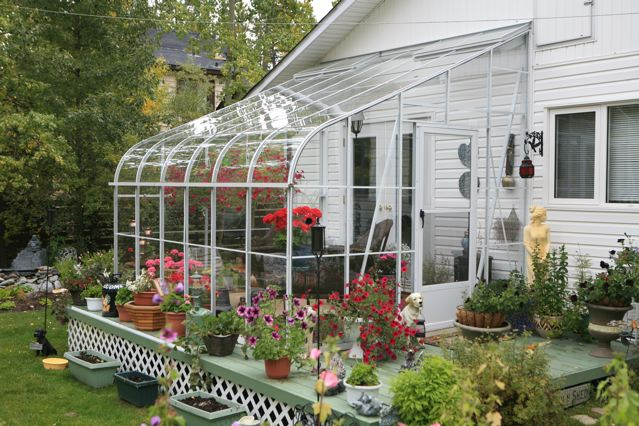
Ideal position for your attached greenhouse:
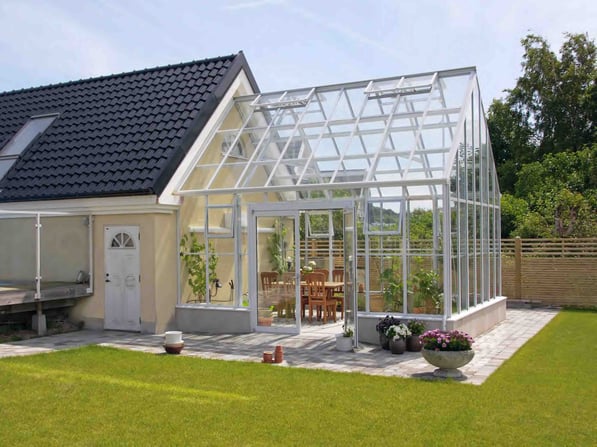
The sun's movement from east to west plays a vital role in the placement of your lean-to greenhouse. Ideally, orienting your greenhouse with its long side facing south maximizes sunlight exposure, especially during the critical shoulder seasons of spring and fall. This orientation encourages faster plant growth, which is a significant benefit.
Thus, the first step in planning a lean-to greenhouse is ensuring the long side faces south, with the short ends pointing east and west. But there are additional factors to consider when planning a lean-to greenhouse.
Attaching the Lean to Greenhouse to Your Home
The benefits of attaching a greenhouse to your home are manifold. According to the Government of Canada’s Green Space report, being around green and growing plants promotes health and well-being by reducing stress and fostering relaxation. If your south-facing wall has enough space, you can enjoy the therapeutic effects of greenery year-round.
However, practical considerations such as local bylaws and space constraints can affect your plans. For instance, if your lot’s south exposure is limited or local regulations prevent construction too close to the curb, you may need to explore alternative placements. Measure and check all local restrictions before finalizing your plans for an attached greenhouse.
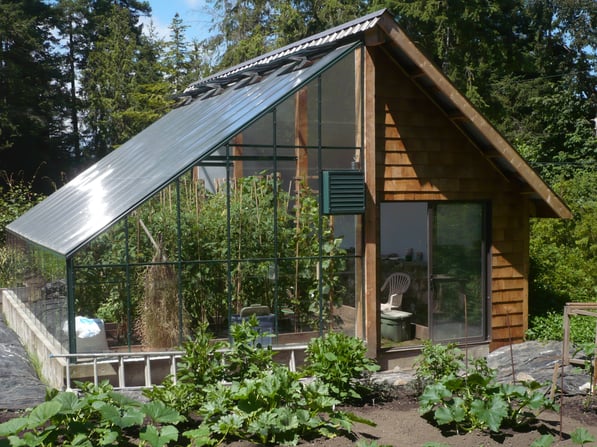
Considerations for Your Attached Greenhouse
In brilliant sunny climates like the central plains and in California, trees provide natural summer shade for a south-facing greenhouse.
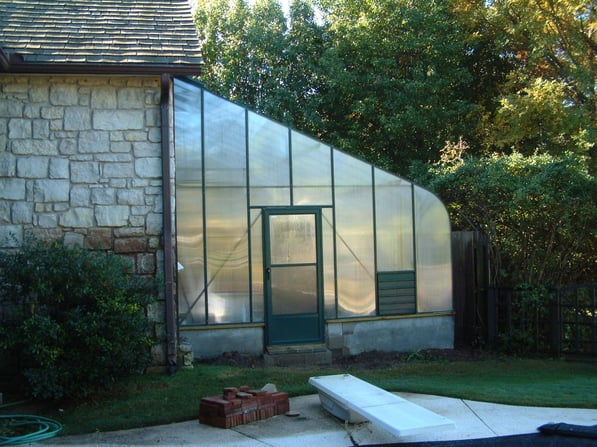
Build Near Shade
In regions with intense sunlight, such as the central plains or California, incorporating natural shade can help manage your greenhouse's temperature. Deciduous trees, like Green Ash in cooler climates (down to zone 2) or Catalpa in warmer areas (zone 5 and up), provide seasonal shade. These trees leaf out late and lose their leaves early, shading your greenhouse only during the hottest parts of the summer. However, evergreen trees are not suitable as they provide too much shade year-round.
Build in the Middle of the Garden
If natural shade is unavailable, shade cloth can be an effective alternative to keep your greenhouse cool during the summer months. Positioning your lean-to greenhouse in your garden’s north or west side can also be practical. This placement integrates the greenhouse into an area you already frequent and ensures it does not shade your vegetables. The greenhouse adds structure, visual interest, and protection from the wind to your garden.
Building into a South-Facing Slope
For gardeners with a gently sloping south-facing lot, incorporating the slope into your greenhouse design can be beneficial. A slope provides natural insulation, helping maintain even temperatures inside the greenhouse. When planning a lean-to greenhouse on a slope, make sure to account for the varying foundation heights, with taller foundations on the north side and shorter walls on the south side.
Framing a Sitting Area
Transforming a previously underutilized space, such as a parking pad, into a sitting area with a greenhouse can dramatically enhance your outdoor living space. For instance, replacing an asphalt pad with paving stones, adding an open-style fence and gate, and incorporating outdoor furniture and plants can create a cozy, functional area. This setup not only maximizes sunlight for the greenhouse but also provides a pleasant spot for relaxation, effectively extending your living area.
.jpg?width=597&name=BC%20Greenhouses%20019%20(Large).jpg)
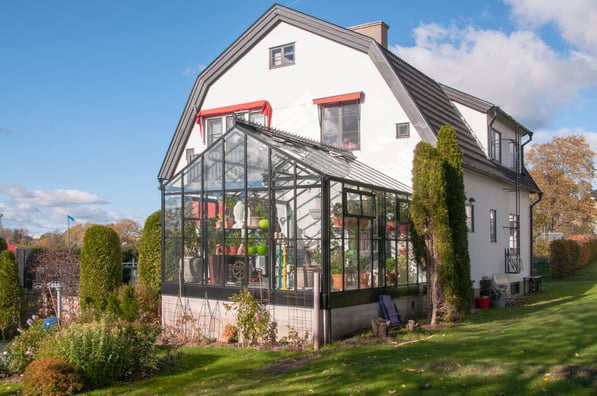
-1.jpg?width=597&name=unnamed%20(2)-1.jpg)
Donna Balzer, author of The Three Year Gardener's Gratitude Journal, shares her plans for placing her free standing greenhouse which can be helpful when thinking about an attached structure. "This changed when we bought the house and redesigned the garden to include our little 8 x 12 greenhouse. We loaded up our utility trailer, moved it across the mountains and planted it where we removed the big wide laurel hedge and asphalt parking pad. Check out Niki Jabbour’s book Ground Breaking Gardens for sketches of my garden designed around my greenhouse.
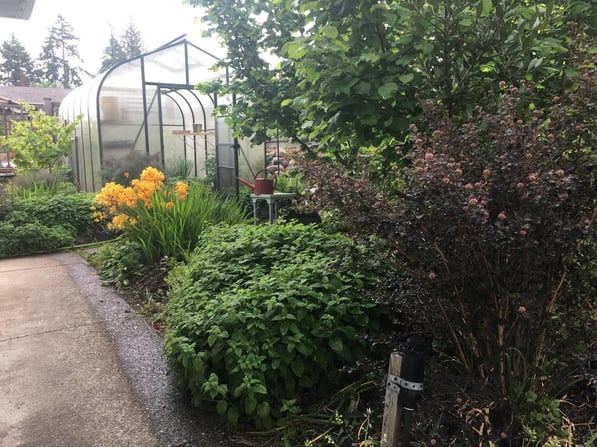
"Replacing asphalt with paving stones, adding an open-style fence and gate, and furnishing with chairs, a table and pots of plants completed the design. Suddenly a parking pad became a sitting area. With our backs against the greenhouse wall, our cozy spot in the shade of the greenhouse is perfect for late day cocktails in summer. The widest part of our greenhouse faces south for the maximum light and our plants love it," says Donna Balzer.
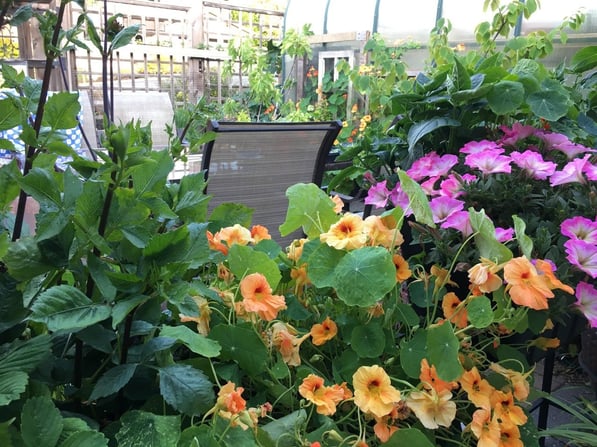
"Suddenly our greenhouse, originally intended as an addition to our house, expands our living area even more as a stand-alone feature, and we simply park our car in our front driveway or garage. Not such a bad compromise. The greenhouse is located perfectly for my yard even though it took me a while to get there."
Conclusion
When planning a lean-to greenhouse, its location and orientation are crucial for optimizing plant growth and integrating the structure seamlessly into your property. By considering factors like sunlight exposure, local bylaws, natural or artificial shading, and potential multifunctional uses, you can ensure your greenhouse meets both your gardening and aesthetic needs. Careful planning of a lean-to greenhouse can transform your home and garden, creating a space that promotes well-being and adds value to your property.
More From Donna
For more great tips from Donna, visit www.donnabalzer.com.
You can also read Donna’s gardening books: No Guff Vegetable Gardening with Steven Biggs and her just released Gardener’s Gratitude Journal: Part Diary, Part Personal Growing Guide.



